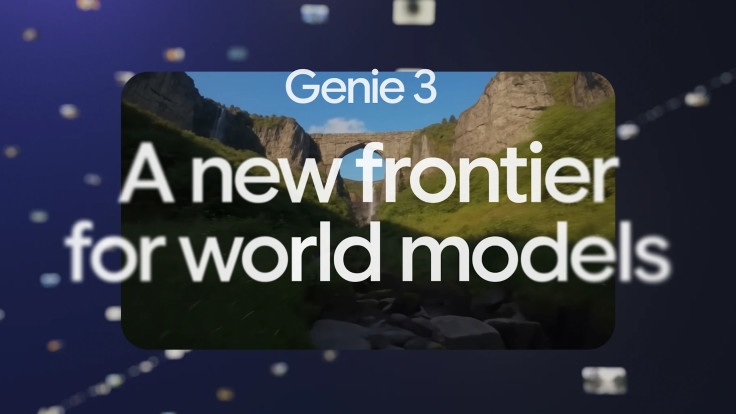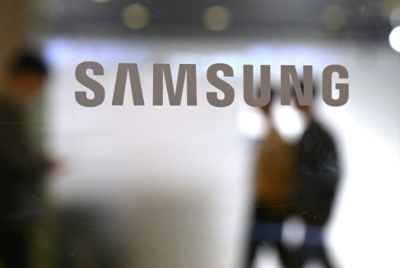Genie 3 Is Here: DeepMind's AI That Literally Shifts the Rules of the Game Inside Its Simulations
The Genie 3 'world model' can generate and alter environments with simple text prompts

Google has unveiled an artificial intelligence so advanced it doesn't merely learn from its environment—it creates entirely new worlds from scratch, fundamentally challenging everything we thought we knew about machine capabilities.
DeepMind's groundbreaking Genie 3 represents a seismic shift in AI development, generating photorealistic virtual environments from simple text commands whilst actively rewriting the parameters of its simulations. This isn't just another chatbot or image generator; it's a system that could train tomorrow's robots, teach autonomous vehicles to navigate complex scenarios, and bring us tantalisingly close to artificial general intelligence (AGI).
A Step Towards AGI
In a significant stride toward artificial general intelligence (AGI), Google introduced a new model that enables AI systems to operate within a lifelike simulation of the physical world.
According to Google, the Genie 3 'world model' could train robots and autonomous vehicles by having them interact with realistic versions of places, such as warehouses.
Google DeepMind believes world models are essential for reaching AGI. At this theoretical AI stage, a system can perform a wide range of tasks, much like a human, rather than just specific ones, such as playing chess or translating. It could even be capable of doing a person's entire job.
'World models are also a key stepping stone on the path to AGI, since they make it possible to train AI agents in an unlimited curriculum of rich simulation environments,' wrote Google DeepMind's Jack Parker-Holder and Shlomi Fruchter in a blog post announcing the arrival of Genie 3.
A New Way to Train AI
According to DeepMind, such models are expected to play a crucial role in the development of AI agents—systems that can perform tasks autonomously without human intervention. The company said, 'We expect this technology to play a critical role as we push toward AGI, and agents play a greater role in the world.'
World models are a key stepping stone on the path to AGI, promising unlimited rich simulations for training AI agents. Genie 3 represents a significant leap forward in making this a reality.
— Google DeepMind (@GoogleDeepMind) August 5, 2025
We’re providing early access to a small cohort of academics and creators, while… pic.twitter.com/p8bCOvcVM0
Regrettably, Google noted that Genie 3 is not yet ready for a full public release and didn't provide a launch date. The Sundar Pichai-led tech giant pointed out that the model also has several limitations.
Blending Reality and Imagination
Beyond AI, Google said its world model could also enable humans to experience different simulations for training or exploration, such as recreating the feeling of skiing or strolling by a mountain lake.
Genie 3 creates its scenarios immediately from text prompts, according to DeepMind. You can also quickly alter the simulated environment with more text prompts—for example, by introducing a herd of deer onto a ski slope.
🔘 Real-world applications
— Google DeepMind (@GoogleDeepMind) August 5, 2025
Genie 3 offers a glimpse into new forms of entertaining or educational generative media.
Imagine seeing life through the eyes of a dinosaur 🦖 exploring the streets of ancient Greece 🏛 or learning about how search and rescue efforts are planned. 🚁 pic.twitter.com/ys1pQIf5do
On Monday, the tech company demonstrated the skiing and warehouse scenarios made by Genie 3 to journalists, though the model isn't being released to the public at this time.
According to The Guardian, the quality of these simulations matches that of Google's latest video tool, Veo 3, but the Genie 3 clips last for minutes, unlike the eight seconds offered by Veo 3.
Beyond AI: A Tool for Humans, Too
While many view AGI as a threat to white-collar jobs—with autonomous systems taking on roles ranging from sales agent to lawyer or accountant—Google sees world models as a crucial technology for developing robots and autonomous vehicles.
For instance, a lifelike simulation of a warehouse, complete with realistic physics and people, could help train a robot. The lessons it learns in this simulated environment would then help it reach its goals. Google also created a virtual agent named Sima that can perform tasks in video games, though, like Genie 3, it is not yet available to the public.
Creating Reality from Words
Genie 3's party trick lies in its immediacy. Type 'snow-covered ski slope at sunset', and watch as a fully interactive environment materialises. Want to add complexity? Simply type 'introduce a herd of deer', and they'll appear seamlessly in your virtual landscape.
During Monday's private demonstration to journalists, Google showcased skiing scenarios and warehouse simulations that rival the quality of their latest video tool, Veo 3. Crucially, whilst Veo 3 produces eight-second clips, Genie 3's creations last minutes—a massive leap in sustained world generation.
However, Google acknowledges limitations. The Sundar Pichai-led giant hasn't announced a public release date, suggesting the technology requires further refinement before widespread deployment.
Experts Weigh In on World Models
Professor Subramanian Ramamoorthy, who holds the chair of robot learning and autonomy at the University of Edinburgh, called world models 'extremely important' for creating robots.
He added, 'To achieve flexible decision-making, robots need to anticipate the consequences of different actions to choose the best one to execute in the physical world.'
Andrew Rogoyski from the Institute for People-Centred AI at the University of Surrey suggested that world models could also support large language models, which power chatbots such as ChatGPT.
'If you give a disembodied AI the ability to be embodied, albeit virtually, then the AI can explore the world, or a world, and grow in capabilities as a result,' he said. 'While AIs are trained on vast quantities of internet data, allowing an AI to explore the world physically will add an important dimension to the creation of more powerful and intelligent AIs.'
From Planning to Action
This breakthrough addresses a critical limitation in current AI. As Google researchers noted when announcing their Sima virtual agent last year, large language models excel at planning but struggle with real-world action.
'While AIs are trained on vast quantities of internet data, allowing an AI to explore the world physically will add an important dimension to the creation of more powerful and intelligent AIs,' Rogoyski added.
For industries from logistics to automotive, Genie 3 represents a paradigm shift. Rather than programming robots line by line or testing vehicles on dangerous roads, companies could soon train their systems in risk-free virtual environments that perfectly mirror reality.
As we stand on the precipice of AGI, Google's world model isn't just pushing boundaries—it's completely redrawing the map.
© Copyright IBTimes 2025. All rights reserved.





















